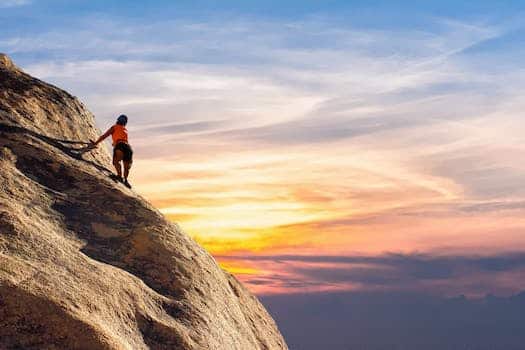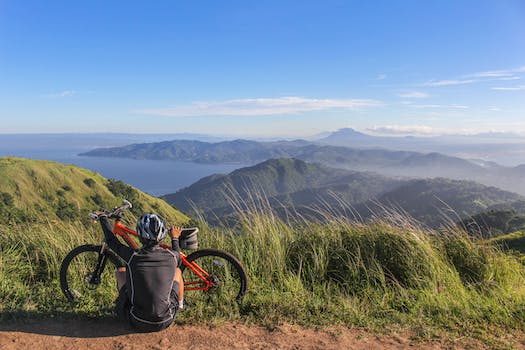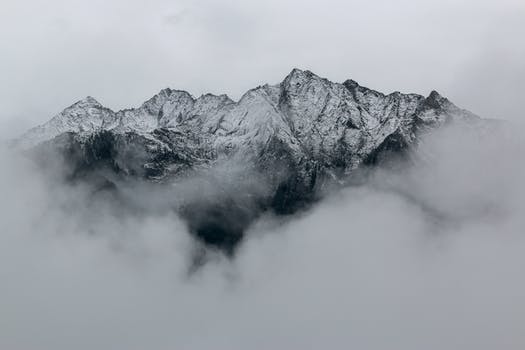Mountain climbing is a thrilling and challenging adventure that requires careful preparation and knowledge. Whether you are an experienced climber or a beginner, these 10 essential tips will help you make the most out of your mountain climbing journey. From proper gear selection to physical fitness training, this article provides valuable insights and practical advice to ensure a safe and enjoyable climbing experience. So, gear up and get ready to conquer the majestic peaks with confidence!
- 1. Introduction
- 1.1. What is mountain climbing?
- 1.2. History of mountain climbing
- 1.3. Benefits of mountain climbing
- 1.4. Popular mountain climbing destinations
- 1.5. Safety precautions for mountain climbing
- 2. Preparing for a Mountain Climb
- 2.1. Physical fitness and conditioning
- 2.2. Choosing the right gear
- 2.3. Training and practice climbs
- 2.4. Understanding the terrain
- 2.5. Planning the climb
- 3. Mountain Climbing Techniques
1. Introduction
Mountain climbing is a thrilling and challenging adventure sport that requires physical strength, mental resilience, and proper planning. Whether you are a beginner or an experienced climber, it is essential to be well-prepared before embarking on a mountain climbing expedition. In this article, we will discuss 10 essential tips that will help you make the most of your mountain climbing experience and ensure your safety. From choosing the right gear to understanding the importance of acclimatization, these tips will provide valuable insights for climbers of all levels. So, let’s dive into the world of mountain climbing and explore these essential tips that will enhance your climbing skills and make your journey a memorable one.
1.1. What is mountain climbing?
Mountain climbing is a challenging outdoor activity that involves scaling high peaks and mountains. It is a physically demanding and adventurous sport that requires climbers to navigate through rugged terrains, steep slopes, and unpredictable weather conditions. Mountaineers often use specialized equipment such as ropes, harnesses, and crampons to ascend and descend mountains safely. The thrill and sense of accomplishment associated with reaching the summit of a mountain attract many enthusiasts to this exhilarating activity. Mountain climbing also offers breathtaking views of the surrounding landscapes and allows climbers to connect with nature in a unique way.
1.2. History of mountain climbing
Mountain climbing, also known as mountaineering, is a challenging and exhilarating activity that involves ascending mountains. It has a rich history that dates back centuries, with early forms of climbing being practiced for various reasons such as exploration, religious purposes, and military strategies.
The origins of mountain climbing can be traced back to the 18th century when the sport started gaining popularity in Europe. The first recorded ascent of a mountain was made by a French scientist named Horace-Bénédict de Saussure in 1786, who successfully climbed Mont Blanc in the Alps.
During the 19th century, mountaineering became more organized, and climbers formed clubs and societies to share their experiences and knowledge. The golden age of mountaineering, which spanned from the mid-19th century to the early 20th century, saw numerous expeditions to conquer some of the world’s highest peaks, including the Himalayas.
Since then, mountain climbing has evolved significantly, with advancements in equipment, techniques, and safety measures. Today, it has become a popular adventure sport and a way for enthusiasts to challenge themselves physically and mentally.
In this article, we will explore 10 essential tips for mountain climbing, covering everything from preparation and training to safety measures and gear selection.
1.3. Benefits of mountain climbing
Mountain climbing offers numerous benefits for both physical and mental well-being. This adventurous activity not only provides a thrilling experience but also serves as an excellent form of exercise. The strenuous nature of climbing mountains helps to build strength, endurance, and improve overall fitness. Additionally, mountain climbing allows individuals to challenge themselves, pushing their limits and developing a sense of accomplishment. It also offers an opportunity to connect with nature and appreciate the beauty of the surroundings. Moreover, climbing mountains can boost mental clarity and reduce stress levels, as it requires focus and concentration. Overall, engaging in mountain climbing can lead to improved physical health, mental resilience, and a greater appreciation for the natural world.
1.4. Popular mountain climbing destinations
Mountain climbing is an exhilarating and challenging adventure sport that attracts thrill-seekers and outdoor enthusiasts from around the world. Whether you are a seasoned climber or a beginner, there are numerous popular mountain climbing destinations that offer breathtaking views and unforgettable experiences. From the towering peaks of the Himalayas to the rugged terrains of the Andes, here are some of the top mountain climbing destinations that should be on every adventurer’s bucket list:
1. Mount Everest, Nepal: Known as the highest peak in the world, Mount Everest is the ultimate challenge for experienced climbers. The trek to the summit requires extensive training and preparation, but the sense of accomplishment upon reaching the top is unparalleled.
2. Kilimanjaro, Tanzania: Mount Kilimanjaro is Africa’s highest peak and a popular choice for climbers of all levels. With its diverse ecosystems and stunning landscapes, this mountain offers a unique and rewarding climbing experience.
3. Mont Blanc, France/Italy: Situated in the Alps, Mont Blanc is Western Europe’s highest peak. It attracts climbers from all over the globe who are drawn to its picturesque surroundings and challenging routes.
4. Aconcagua, Argentina: As the highest peak in the Southern and Western Hemispheres, Aconcagua presents a formidable challenge for climbers. Its remote location and extreme weather conditions make it a true test of endurance.
5. Mount Rainier, USA: Located in Washington State, Mount Rainier is an iconic peak in the Pacific Northwest. With its stunning glaciers and diverse climbing routes, it offers a thrilling experience for climbers of varying skill levels.
6. Matterhorn, Switzerland/Italy: The Matterhorn is one of the most famous and recognizable mountains in the world. Straddling the border between Switzerland and Italy, it boasts steep faces and challenging ascents that attract experienced climbers.
7. Mount Fuji, Japan: Mount Fuji is not only a sacred site but also a popular destination for climbers. Its symmetrical cone shape and cultural significance make it a must-visit for those seeking a unique mountain climbing experience.
8. El Capitan, USA: Situated in Yosemite National Park, El Capitan is a legendary rock formation that lures climbers from far and wide. Its sheer granite walls offer some of the most challenging and rewarding climbs in the world.
9. Mount McKinley, USA: Also known as Denali, Mount McKinley is the highest peak in North America. Its extreme weather conditions and technical challenges make it a sought-after destination for experienced mountaineers.
10. Mount Cook, New Zealand: Located in the Southern Alps, Mount Cook is the highest peak in New Zealand. It offers a range of climbing routes suitable for both beginners and advanced climbers, along with stunning alpine scenery.
These popular mountain climbing destinations provide a mix of adventure, natural beauty, and a chance to push your limits. However, it’s important to remember that mountain climbing can be dangerous, and proper preparation, training, and equipment are essential. With the right mindset and skills, you can embark on an unforgettable mountain climbing journey.
1.5. Safety precautions for mountain climbing
Mountain climbing is an exhilarating and challenging adventure sport that requires careful planning and preparation. Whether you are a novice or an experienced climber, it is crucial to prioritize safety at all times. The mountains can be unpredictable and unforgiving, so taking the necessary precautions is essential to ensure a successful and enjoyable climbing experience. In this section, we will discuss some important safety measures that every mountain climber should follow.
2. Preparing for a Mountain Climb
Preparing for a Mountain Climb
When planning for a mountain climb, it is crucial to be well-prepared in order to ensure a safe and successful adventure. Here are some essential tips to help you get ready:
1. Physical Fitness: Engage in regular physical activities and exercises to build strength and endurance. Focus on cardiovascular exercises, as they will help you cope with the high-altitude conditions.
2. Research: Gather information about the mountain you plan to climb, including its elevation, weather patterns, and any potential hazards. This will help you make informed decisions and be prepared for what lies ahead.
3. Gear and Equipment: Invest in good-quality gear and equipment that are suitable for mountain climbing. This includes proper footwear, clothing layers, backpack, navigation tools, and safety equipment such as ropes, harnesses, and helmets.
4. Training: Consider undertaking a mountaineering course or training program to learn essential skills like rope handling, navigation, and emergency procedures. Practice using your gear and equipment before the climb to familiarize yourself with their usage.
5. Acclimatization: Gradually expose yourself to higher altitudes to allow your body to adjust to the changing conditions. This helps prevent altitude sickness and improves your overall performance.
6. Packing: Create a comprehensive packing list that includes essential items such as food, water, first aid kit, sunscreen, sunglasses, headlamp, and extra clothing. Pack lightweight items and prioritize the necessities.
7. Safety Measures: Familiarize yourself with basic safety protocols and procedures. Always hike with a partner or a group, inform someone about your climbing plans, and be aware of potential risks like avalanches and rockfalls.
8. Weather Monitoring: Keep a close eye on the weather forecast leading up to your climb. Unfavorable weather conditions can greatly impact your safety and the success of your climb. Be prepared to adjust your plans accordingly.
9. Physical and Mental Rest: Prioritize getting enough rest before the climb. A well-rested body and mind will be better equipped to handle the physical and mental challenges of mountain climbing.
10. Respect Nature: Practice Leave No Trace principles and respect the environment. Minimize your impact on the mountain by properly disposing of waste, staying on designated trails, and respecting wildlife.
By following these essential tips, you will be well-prepared for your mountain climb and increase your chances of having a safe and memorable experience.
2.1. Physical fitness and conditioning
Physical fitness and conditioning are crucial when preparing for a mountain climb. To ensure a successful and safe climb, it is important to be in good physical shape and have the necessary endurance. Here are some essential tips for getting physically prepared before embarking on a mountain climbing adventure:
1. Start with a fitness assessment: Before beginning any training regimen, it is advisable to consult with a healthcare professional and undergo a fitness assessment. This will help determine your current fitness level and identify any potential health risks.
2. Build cardiovascular endurance: Mountain climbing requires a high level of cardiovascular fitness. Engage in activities like running, cycling, or swimming to improve your endurance and strengthen your heart and lungs.
3. Incorporate strength training: Strengthening your muscles is crucial for mountain climbing. Focus on exercises that target your core, legs, and upper body, such as squats, lunges, planks, and push-ups.
4. Increase flexibility: Flexibility is key in mountain climbing, as it allows for better movement and reduces the risk of injury. Incorporate stretching exercises into your routine to improve flexibility in your muscles and joints.
5. Train on varied terrains: Mountain climbing involves navigating through different terrains, so it is important to train on various surfaces. Include hikes on hills, uneven trails, and rocky terrain to simulate the conditions you may encounter during your climb.
6. Practice proper breathing techniques: Efficient breathing is essential for climbing at high altitudes. Practice deep breathing exercises to improve your lung capacity and oxygen intake.
7. Gradually increase intensity: Start your training at a comfortable level and gradually increase the intensity and duration of your workouts. This will help prevent injuries and allow your body to adapt to the physical demands of mountain climbing.
8. Hydrate and maintain a balanced diet: Proper hydration and nutrition are crucial for optimal performance during a mountain climb. Drink plenty of water and consume a balanced diet rich in carbohydrates, proteins, and healthy fats.
9. Get sufficient rest: Rest and recovery are just as important as training. Allow your body enough time to rest and repair itself between workouts to avoid overtraining and fatigue.
10. Acclimate to high altitudes: If you are climbing a high-altitude mountain, it is crucial to acclimate yourself to the altitude. Gradually increase your exposure to higher altitudes to allow your body to adjust to the reduced oxygen levels.
By following these essential tips, you can improve your physical fitness and conditioning, ensuring a safer and more enjoyable mountain climbing experience.
2.2. Choosing the right gear
Choosing the right gear is crucial when preparing for a mountain climb. The gear you take with you can determine your safety and comfort throughout the journey. Here are some tips to help you select the appropriate gear for your mountain climbing expedition:
1. Clothing: Invest in high-quality, moisture-wicking, and insulating clothing that is suitable for the weather conditions you will encounter. Layering is essential to regulate body temperature.
2. Footwear: Choose sturdy, waterproof hiking boots with excellent ankle support. They should be comfortable and well-fitted to prevent blisters and injuries.
3. Backpack: Opt for a backpack that is spacious enough to carry all your essentials, yet lightweight and ergonomic. Look for features like padded shoulder straps and a hip belt to distribute the weight evenly.
4. Navigation tools: Carry a map, compass, and GPS device to navigate your way through the mountains. Familiarize yourself with their usage before embarking on the climb.
5. Climbing equipment: Depending on the difficulty of the climb, you may need ropes, harnesses, carabiners, and other specialized gear. Consult with experienced climbers or guides to determine the necessary equipment.
6. Protection against the elements: Pack a waterproof and windproof jacket, gloves, hat, and sunglasses to shield yourself from rain, snow, wind, and harsh sunlight.
7. Safety gear: Carry a first aid kit with essential medical supplies, including bandages, pain relievers, and blister treatment. Additionally, include a headlamp, whistle, and a multi-tool for emergencies.
8. Food and water: Pack lightweight, high-energy snacks and meals that are easy to consume on the go. Carry an adequate supply of water or invest in a portable water filter.
9. Communication devices: Take a fully charged mobile phone, a backup power bank, and a satellite phone if you plan to climb in remote areas with limited network coverage.
10. Training and guides: Equip yourself with the necessary skills and knowledge by undergoing mountaineering courses or hiring experienced guides who can provide valuable assistance and ensure your safety.
Remember, having the right gear not only enhances your performance but also plays a crucial role in preventing accidents and ensuring a successful mountain climbing experience.
2.3. Training and practice climbs
Training and practice climbs are essential for preparing for a mountain climb. Before attempting a challenging climb, it is important to build up your physical stamina and endurance through regular training. This can include activities such as hiking, running, cycling, and strength training exercises. Additionally, practicing climbs on smaller mountains or hills can help you gain experience and confidence in handling different terrains and weather conditions. It is also recommended to participate in mountaineering courses or hire a professional guide to learn essential skills like rope handling, navigation, and emergency procedures. By investing time in training and practice climbs, you can enhance your fitness level and acquire the necessary knowledge and skills to tackle a mountain climb successfully.
2.4. Understanding the terrain
Understanding the terrain for section with title Preparing for a Mountain Climb
2.5. Planning the climb
When it comes to planning a mountain climb, proper preparation is essential for a successful and safe journey. Here are some important tips to consider before embarking on your adventure:
1. Research the mountain: Gather information about the mountain you plan to climb. Understand its terrain, weather conditions, and any potential risks or challenges you may face.
2. Physical training: Mountain climbing can be physically demanding, so it is crucial to be in good physical shape. Engage in regular exercise and activities that improve your endurance, strength, and flexibility.
3. Acquire necessary skills: Depending on the difficulty level of the mountain climb, you may need to acquire specific skills such as rock climbing, glacier traversing, or using specialized equipment. Take courses or seek guidance from experienced climbers if needed.
4. Gear and equipment: Prepare a comprehensive gear list based on the requirements of the climb. This may include clothing suitable for varying weather conditions, climbing harness, ropes, ice axes, crampons, helmets, and other protective gear.
5. Safety measures: Familiarize yourself with safety protocols and procedures, such as using ropes, belaying techniques, and self-arrest techniques. Carry a first aid kit and know how to administer basic medical aid.
6. Nutrition and hydration: Maintain a well-balanced diet leading up to the climb and ensure you stay hydrated throughout the journey. Carry enough food and water to sustain yourself during the climb.
7. Weather monitoring: Stay updated on weather forecasts and be prepared to reschedule or adjust your climbing plans if necessary. Severe weather conditions can pose significant risks.
8. Communication devices: Carry reliable communication devices such as a satellite phone or a two-way radio. This will allow you to stay connected with your team and seek help in case of emergencies.
9. Physical and mental rest: Prioritize getting sufficient rest before the climb. This will help you maintain focus, make better decisions, and reduce the risk of fatigue-related accidents.
10. Teamwork and support: Climbing with a team is highly recommended for safety and support. Ensure good communication, teamwork, and trust among team members to enhance the overall climbing experience.
By planning and preparing adequately, you can increase your chances of a successful and enjoyable mountain climb.
3. Mountain Climbing Techniques
Mountain climbing is an exhilarating and challenging adventure that requires proper techniques to ensure safety and success. Whether you are a beginner or an experienced climber, it is important to be well-prepared and knowledgeable about the essential tips for mountain climbing. Here are 10 key techniques that every mountain climber should know:
1. Physical Fitness: Maintaining a good level of physical fitness is crucial for mountain climbing. Regular exercise, including cardio and strength training, will help you build endurance and strength needed for the demanding climbs.
2. Proper Gear: Investing in high-quality gear is essential for a safe and enjoyable mountain climbing experience. This includes items such as ropes, harnesses, helmets, crampons, ice axes, and proper footwear. Make sure to check and maintain your gear regularly.
3. Navigation Skills: Having strong navigation skills is important to avoid getting lost or straying off the intended route. Learn how to read maps, use a compass, and understand the terrain to navigate effectively.
4. Weather Awareness: Weather conditions can change rapidly in the mountains, so it is crucial to stay informed and be aware of any potential weather hazards. Monitor weather forecasts and be prepared to adjust your plans accordingly.
5. Rope Management: Knowing how to properly handle and manage ropes is essential for safety during mountain climbing. Learn different techniques such as tying knots, belaying, and rappelling to ensure secure climbing.
6. Efficient Footwork: Good footwork is essential for maintaining balance and stability while climbing. Practice proper footwork techniques such as edging, smearing, and toe pointing to improve your climbing efficiency.
7. Climbing Techniques: Familiarize yourself with different climbing techniques such as rock climbing, ice climbing, and mixed climbing. Each type requires specific skills and equipment, so it is important to learn and practice accordingly.
8. Safety Protocols: Always prioritize safety during mountain climbing. Familiarize yourself with safety protocols such as communication signals, buddy checks, and emergency procedures. Be prepared for any unforeseen circumstances.
9. Acclimatization: When climbing at high altitudes, acclimatization is crucial to avoid altitude sickness. Gradually ascend to higher altitudes, take regular breaks, and hydrate properly to allow your body to adjust.
10. Mental Preparedness: Mountain climbing can be mentally challenging, so it is important to be mentally prepared. Stay focused, maintain a positive mindset, and be prepared to overcome any obstacles or fears that may arise.
By following these 10 essential tips for mountain climbing and practicing the necessary techniques, you can enhance your climbing skills and have a safe and enjoyable mountain climbing experience.
3.1. Belaying and rappelling
Belaying and rappelling are vital techniques in mountain climbing that ensure the safety and success of climbers. Belaying refers to the process of securing the rope to protect the climber from falling, while rappelling is the controlled descent using a rope. These techniques require skill, knowledge, and proper equipment. It is essential for every mountain climber to master the art of belaying and rappelling to navigate challenging terrains and reach higher altitudes with confidence.
3.2. Rock climbing techniques
Rock climbing techniques are essential for mountain climbers to ensure their safety and success in reaching the summit. These techniques involve using proper body positioning, equipment management, and efficient movement on the rock face. Here are some key techniques to master for a successful mountain climbing experience:
1. Proper Footwork: Maintaining good foot placement is crucial in rock climbing. It is important to find secure footholds and distribute your weight evenly to avoid slipping or losing balance.
2. Handholds and Grip: Learning different handholds and grip techniques is essential for maintaining a firm hold on the rock. This includes using crimps, jugs, slopers, and pinches to maximize your grip strength.
3. Body Positioning: Understanding how to position your body correctly while climbing is vital. This involves keeping your hips close to the wall, using your legs for support, and maintaining a balanced stance.
4. Route Reading: Before starting a climb, it is important to study the route and plan your moves accordingly. Look for potential holds, rests, and the path of least resistance to save energy and time.
5. Rope Management: Properly managing the rope is crucial for safety. This includes tying proper knots, using belay devices correctly, and ensuring a smooth rope flow to minimize friction and rope drag.
6. Efficient Movement: Climbing efficiently involves using the least amount of energy to make progress. This includes pacing yourself, avoiding unnecessary movements, and using momentum to your advantage.
7. Breathing Techniques: Control your breathing to maintain a steady rhythm and conserve energy. Take deep breaths during rests and exhale slowly while making moves.
8. Resting Techniques: Knowing how and when to rest is important to prevent fatigue. Look for suitable ledges or holds to take short breaks and recover your strength.
9. Communication: Effective communication with your climbing partner is crucial for safety. Use clear and concise verbal and non-verbal cues to coordinate your moves and ensure a smooth climbing experience.
10. Mental Preparation: Mountain climbing requires mental strength and focus. Stay calm, maintain a positive mindset, and overcome any challenges or fears that may arise during the climb.
By mastering these rock climbing techniques, you will be well-prepared to tackle any mountain climbing adventure with confidence and skill.
3.3. Ice climbing techniques
Ice climbing is a challenging and exhilarating activity that requires specific techniques to ensure safety and success. Whether you are a beginner or an experienced mountaineer, mastering these ice climbing techniques is essential. Here are some key techniques to consider when venturing into the world of ice climbing:
1. Properly Use Ice Tools: Ice tools are the primary equipment used in ice climbing. Learning how to properly hold and swing ice tools will greatly enhance your climbing efficiency and stability.
2. Crampon Techniques: Crampons are metal spikes that attach to your boots and provide traction on ice. Understanding different crampon techniques, such as front-pointing and flat-footing, will help you navigate various ice conditions.
3. Ice Screw Placement: Ice screws are vital for creating anchor points and protecting yourself during an ice climb. Knowing how to place ice screws securely and efficiently is crucial for your safety.
4. Balance and Body Positioning: Maintaining balance and using proper body positioning is essential for ice climbing. Learning how to distribute your weight and position your body correctly will help you move efficiently and reduce fatigue.
5. Efficient Tool Placements: Placing your ice tools in solid and secure positions is crucial. By utilizing efficient tool placements, you can conserve energy and ensure a stable hold on the ice.
6. Rope Management: Proper rope management is essential for ice climbing. Understanding techniques such as coiling, belaying, and rope handling will enhance your safety and allow for smooth movement on the ice.
7. Communication: Effective communication with your climbing partner is vital during ice climbing. Establishing clear verbal and non-verbal signals can help prevent accidents and ensure a coordinated climb.
8. Self-Arrest Techniques: Self-arrest techniques are essential for stopping a fall on ice. Learning how to perform a self-arrest using an ice axe can save your life in case of a slip or slide.
9. Reading Ice Conditions: Understanding how to read ice conditions is crucial for planning a successful climb. Being able to assess the quality and stability of the ice will help you make informed decisions and avoid dangerous situations.
10. Mental Preparedness: Ice climbing requires mental strength and focus. Being mentally prepared to face challenging situations and overcome obstacles is just as important as physical fitness. Developing mental resilience will contribute to your overall success as an ice climber.
By mastering these ice climbing techniques, you can embark on thrilling ice climbing adventures while ensuring your safety and enjoyment. Remember to always practice under the guidance of experienced climbers and prioritize safety at all times.
3.4. Avalanche safety and rescue
When it comes to mountain climbing, ensuring avalanche safety and knowing how to perform a rescue are essential skills that every climber should possess. Avalanche incidents can occur unexpectedly, posing a significant threat to climbers. Therefore, being well-prepared and knowledgeable in avalanche safety measures is crucial.
To ensure avalanche safety, climbers should always check the weather conditions and avalanche forecasts before embarking on their journey. It is important to be aware of the snowpack stability, as well as any recent snowfall or wind events that might increase the risk of avalanches.
Carrying essential avalanche safety equipment is another vital aspect of mountain climbing. This includes an avalanche transceiver, shovel, and probe. Climbers should be proficient in using these tools and understand their functionality. Regular practice and training in avalanche rescue techniques are necessary to ensure quick and effective response in case of an avalanche emergency.
Additionally, climbers should be knowledgeable about safe travel techniques in avalanche terrain. This involves identifying potential avalanche paths, avoiding steep slopes, and traveling one at a time in hazardous areas. It is also crucial to maintain constant communication with fellow climbers and establish predetermined meeting points in case of separation.
In the event of an avalanche, immediate action is crucial for successful rescue. Climbers should carry out companion rescue techniques, which involve locating and excavating buried individuals as quickly as possible. Time is of the essence in an avalanche rescue, and having the necessary skills and equipment can make a significant difference in saving lives.
Overall, avalanche safety and rescue techniques are vital components of mountain climbing. By being well-prepared, knowledgeable, and equipped with the right tools, climbers can minimize the risks associated with avalanches and ensure a safe and enjoyable climbing experience.
3.5. Using climbing equipment
Using climbing equipment is essential for mountain climbing. Properly selecting and using the right equipment can greatly enhance your safety and efficiency during your climb. Here are some important tips on using climbing equipment:
1. Harness: A harness is a vital piece of equipment that securely attaches you to the rope. Make sure to choose a harness that fits well and is comfortable for long periods of wear.
2. Helmet: Protect your head from falling rocks or other hazards by wearing a sturdy helmet. Look for a helmet that meets safety standards and provides a snug fit.
3. Rope: The rope is your lifeline during a climb. Ensure it is strong, durable, and appropriate for the type of climb you are attempting. Regularly inspect the rope for any signs of wear or damage.
4. Carabiners: These metal clips are used to secure ropes, harnesses, and other equipment. Invest in high-quality carabiners that are easy to use and reliable.
5. Climbing shoes: Having proper footwear is crucial for grip and stability on the mountain. Choose climbing shoes that fit well, provide good traction, and offer ankle support.
6. Crampons: Crampons are metal spikes that attach to your boots, providing traction on icy or snowy terrain. Pick crampons that are compatible with your boots and suitable for the conditions you will encounter.
7. Ice axe: An ice axe is a versatile tool used for self-arrest, cutting steps, and anchoring. Learn how to properly use an ice axe and always carry one during icy or steep sections of your climb.
8. Ascenders and descenders: These devices help you ascend or descend ropes more efficiently. Familiarize yourself with their operation and practice using them before your climb.
9. Slings and webbing: These are useful for creating anchors, extending protection, or building belays. Learn various knots and techniques for using slings and webbing effectively.
10. Belay device: A belay device is used to control the rope during belaying. Choose a belay device that suits your preferences and is compatible with your rope.
Remember, using climbing equipment correctly and maintaining it in good condition is crucial for a safe and successful mountain climbing experience.
Conclusion
In conclusion, these 10 essential tips for mountain climbing will help ensure a safe and successful expedition. By following these guidelines, climbers can enhance their skills, prepare adequately, and overcome challenges they may encounter. Whether it’s proper planning, physical fitness, or equipment and safety measures, each tip contributes to a memorable and fulfilling mountain climbing experience.





